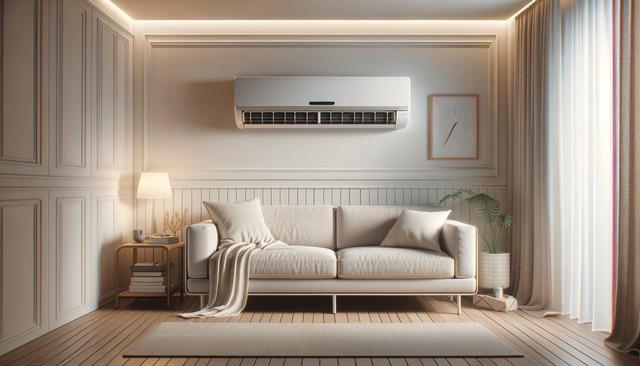What Is a Ductless Air Conditioner and How Does It Work?
A ductless air conditioner, also known as a mini-split system, is a cooling unit that operates without the need for traditional ductwork. Unlike central air systems that circulate air through ducts, ductless AC units deliver cooled air directly into specific zones or rooms. The system typically consists of two main components: an indoor air-handling unit and an outdoor compressor. These two units are connected by a conduit that houses the power cable, refrigerant tubing, suction tubing, and a condensate drain.
Installation is often quicker and less invasive compared to ducted systems, making ductless air conditioning a practical solution for older homes, room additions, or spaces where installing ductwork would be costly or impractical. Homeowners looking to upgrade their comfort without the hassle of extensive renovations often turn to these systems for their simplicity and efficiency.
Energy Efficiency and Cost Savings
One of the main reasons ductless air conditioners are gaining popularity is their energy efficiency. Traditional HVAC systems can lose a significant amount of energy through ductwork—sometimes as much as 30%. Ductless systems avoid this loss entirely, which can lead to noticeable reductions in energy bills. Additionally, ductless units often use inverter-driven compressors, which adjust speed based on demand rather than shutting off entirely, avoiding unnecessary energy consumption.
Here are some ways ductless AC units contribute to cost savings:
- Lower energy consumption due to targeted cooling
- No ductwork means no energy loss through leaks
- Reduced maintenance costs over time
- Potential eligibility for energy efficiency rebates
By focusing on cooling only the rooms you use, ductless systems allow for smarter energy management, especially in homes with varying occupancy levels throughout the day.
Flexible Zoning and Personalized Comfort
Ductless air conditioners offer a zoning feature that allows homeowners to adjust the temperature room by room. This zoning capability means each family member can enjoy their preferred temperature settings, improving overall comfort in the home. It’s also ideal for homes with rooms that are naturally hotter or cooler than others, such as basements or attic conversions.
Benefits of zoning with ductless AC units include:
- Independent temperature control for each zone
- Elimination of hot or cold spots
- Optimized comfort for multi-level homes
- Better energy control and reduced waste
This level of control not only enhances comfort but also contributes to energy savings by avoiding unnecessary cooling in unoccupied areas.
Sleek Design and Quiet Operation
Modern ductless air conditioners are designed with aesthetics in mind. The indoor units are compact and can be mounted on walls or ceilings, blending well with most interior styles. Unlike bulky window units or noisy central systems, ductless models operate with minimal sound, offering a quieter indoor environment.
Key design and performance advantages include:
- Unobtrusive indoor units that complement room decor
- Quiet performance for a peaceful home atmosphere
- Remote or smartphone control for added convenience
- Multiple styles and sizes to fit various room types
For homeowners who prioritize design and noise control, ductless systems provide a practical and visually appealing solution.
Easy Installation and Low Maintenance
Installation of a ductless air conditioner is generally straightforward and less time-consuming than traditional ducted systems. Because no ductwork is required, the process involves only a small opening in the wall to connect the indoor and outdoor units. This results in less disruption to your home and faster setup.
Maintenance is also simplified, as there are fewer components to service. Regular filter cleaning and occasional professional checkups are usually enough to keep the system running efficiently. The lack of ducts also means there’s no need to worry about dust or mold buildup that can occur in traditional systems.
Advantages of easy installation and maintenance:
- Less invasive setup ideal for existing structures
- Faster installation time compared to central systems
- Lower long-term upkeep requirements
- Improved indoor air quality due to fewer contaminants
Ductless air conditioning systems provide a user-friendly experience from installation to daily use, making them a practical choice for modern homeowners.
Conclusion: A Smart Choice for Modern Comfort
Ductless air conditioners combine efficiency, flexibility, and comfort in a sleek and user-friendly package. Whether you’re upgrading an older home, adding a new space, or simply looking for a more energy-conscious cooling solution, these systems offer a compelling alternative to traditional HVAC setups. With benefits like zoned temperature control, lower energy costs, and easy installation, ductless AC units are well-regarded by homeowners seeking smart, tailored comfort.
If you’re ready to enjoy a cooler, quieter, and more efficient home environment, considering a ductless air conditioner may be a step in the right direction.






